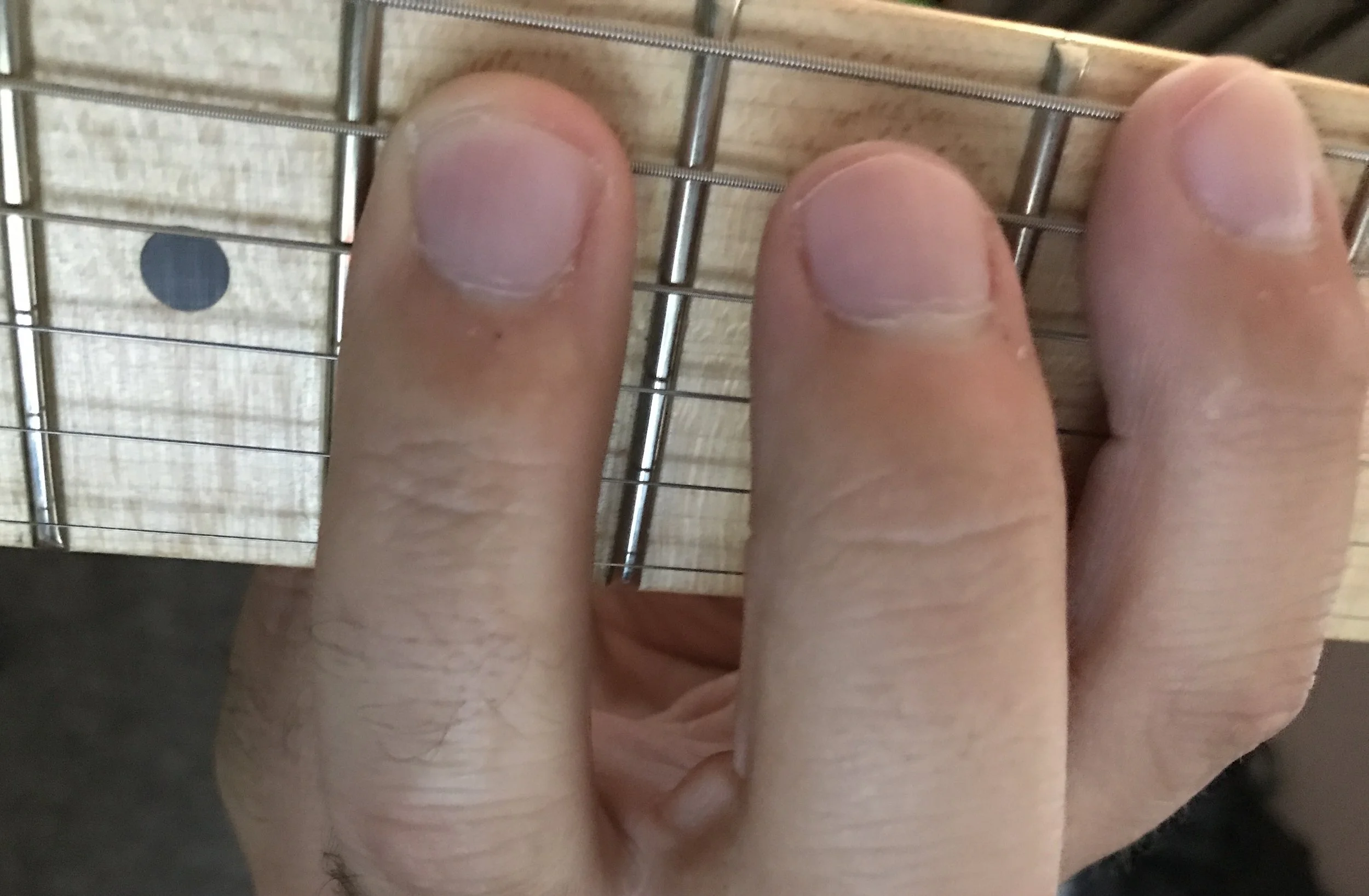Learning how to play power chords is one of the essential things you can do as a beginner guitar player. Power chords show up in so many different genres, and are a simple way to navigate the fretboard.
Learning power chords gives you a quick way to play songs, as the chords aren’t major or minor, because they don’t include the 3rd. They only include the root note and a fifth.
If you're just starting out you might want to tackle power chords first because they only require two fingers. Here’s how to start on your road to playing rhythm!
How to play power chords on the low E and A strings
Playing power chords is easy, but you'll want to note a couple of key points. First, whether you're on the low E string or the A string, you'll want to make sure your index finger is pressing firmly down in between the frets and that it's angled so you don't mute the string that you're trying to play below (i.e. the A string).
You'll also want to do a similar thing for the ring finger's placement. Give it a little arch so the note rings out and can be heard. Take a look at the photo on the left as to where your finger placement should be. Also take a look at the photo on the right to show how when you’re playing on the A string (5th string) that you can use the tip of your first finger to mute the low E (6th string).
Note: Only my index and ring fingers are down here. My middle finger is not pressing a string.
Use the tip of your index finger to mute the low E while playing chords on the A string.
While arching your index and ring fingers you'll want to make sure that you use your left hand to mute the strings you don't want to play, or simply try and avoid hitting them. The easiest way to do this is to use the lower part of your index finger to mute the strings you won’t be playing. With all power chords you'll only be playing 2 strings at a time, so make sure the others don't ring out.
Moving around with power chords
One of the first things you should try is moving around on the same set of strings that you're playing. Look at Example 1 where you can move from the 5th fret down to the 1st fret and back up on the low E string. This’ll help you practice switching chords on the same string set.
The next thing you can try in Example 2 is to move from one string set to a set below. Move from the 5th fret on the low E String to the 5th fret on the A string and back again. This helps you practice power chords and getting your fingers in place after taking them off the 6th and 5th strings, when you move them to the 5th and 4th strings.
After that you should try switching frets from string set to string set like I'm showing you in Example 3.
Finally, let's put it all together, moving all around the fretboard to make a very common sounding progression in Example 4.
If you want to practice further, the in between of power chords and barre chords is to put your pinky down on the 4th string when playing a power chord, so you can also make an octave of your root note while playing the 5th with your ring finger (see Example 5).
What's next?
Power chords are an easy way to start learning rhythm, how to move around the fretboard, and play more songs. Once you learn power chords, start practicing them by downloading tabs of your favorite songs and playing along.
After power chords, the next logical step would be learning how to play barre chords in major and minor forms. We'll get there though! For now, start with power chords, and if you have any questions, feel free to reach out on Twitter or Facebook.


